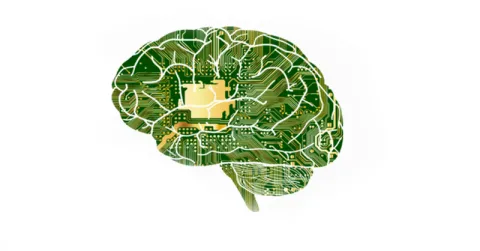
In July 2021, the CNR - Institute of Cognitive Science and Technology published the paper: 'Artificial Intelligence for Sustainable Development'.
The focus of the publication is the implications that artificial intelligence can bring to the 17 Sustainable Development Goals of the UN 2030 Agenda.
A necessary premise for the introduction of AI in the pursuit of the SDGs is that it is necessary to understand how to achieve the single goal without compromising the achievement of the others: the 2030 Agenda indicates the goals but lacks cost indicators. The CNR document points out that what is missing is: "an understanding of the context in which we are immersed, an analysis of the constraints to which we are subjected (in short, the scarce resources and the damage we could produce), and the tools we have at our disposal." (cit. S. Ferilli, E. Girardi, C. Musto, M. Paolini, P. Poccianti, S. Pochettino, G. Semeraro, L'intelligenza artificiale per lo sviluppo sostenibile, CNR Edizioni, 2021, p.60, editor’s translation)
It is, therefore, necessary to produce an assessment of the risks that AI intervention can bring, and to this end the document then offers a pointed analysis of the contributions that AI can make to the achievement of each objective, some examples of which are given below:
1. Poverty
What AI can do: Help us measure poverty in its various forms using satellite data, but also through apps on smartphones.
Dangers and risks to be avoided: Increase the level of inequality by, for example, increasing the level of unemployment or limiting the access of poor people to insurance and prevention services.
2. Zero Hunger
What AI can do: Improve agriculture through artificial intelligence tools.
Dangers and risks to be avoided: Using AI systems to increase monoculture and intensive livestock farming.
3. Health and Welfare
What AI can do: Help us to better measure health.
Dangers and risks to be avoided: Use of sensitive data for incorrect uses (discrimination at work, access to insurance, other forms of social division, etc.).
4. Quality education
What IA can do: Reduce teachers' workload devoted to bureaucratic tasks, freeing up time for teaching.
Dangers and risks to be avoided: Use systems that lead to one-size-fits-all thinking without differences.
5. Gender Equality
What AI can do: Develop bias detection algorithms to contribute to studies on gender stereotypes and prejudices, and raise awareness in the general population.
Dangers and risks to be avoided: Reinforcement of gender stereotypes and biases.
6. Clean water and hygiene
What IA can do: Optimise water consumption, including through smart agriculture interventions.
Dangers and risks to be avoided: Waste of water in the construction of devices.
7. Clean and accessible energy
What AI can do: Reduce energy consumption by building virtuous devices and guiding user behaviour.
Dangers and risks to avoid: Neglecting the costs of transferring information on computer networks.
8. Decent work and economic growth
What AI can do: Contribute to reducing the workload of bureaucratic aspects, concentrating workers on creative and more satisfying tasks.
Dangers and risks to be avoided: Concentrating the advantage gained in the hands of a few without distributing it to all the company's stakeholders.
9. Industry, innovation and infrastructure
What AI can do: Help the transition to the circular economy by providing reference ontologies for the exchange of quality information in production chains.
Dangers and risks to be avoided: Concentration of large amounts of data in the hands of a few private companies acting in the interests of individual profit.
10. Reducing inequalities
What AI can do: Help decision-makers simulate the consequences of their decisions.
Dangers and risks to be avoided: ia tools owned by a few who have the ability to find solutions.
11. Sustainable cities and communities
What AI can do: Optimise the transport system to achieve services.
Dangers and risks to be avoided: Creation of useless digital services just to increase spending and consumption.
12. Responsible consumption and production
What AI can do: Optimise transport of food and goods, reducing pollution that is not effectively counted today.
Dangers and risks to avoid: Driving consumers to make inappropriate purchases.
13. Acting for the climate
What AI can do: Help decrease consumption (understood as waste) and understand costs.
Dangers and risks to be avoided: Production of devices with a high environmental impact.
14. Life underwater
What AI can do: Suggest non-destructive fishing tools.
Dangers and risks to be avoided: Production of devices that are disposed of in the sea at the end of their life.
15. Life on Earth
What AI can do: Help people understand that destroying the planet is not the best way to optimise wellbeing and enable us to survive.
Dangers and risks to avoid: Confusing growth in consumption with growth in well-being.
16. Peace, justice and strong institutions
What AI can do: Prevent possible situations of violence and delinquency.
Dangers and risks to be avoided: Exploitation of social networks for social and political conditioning.
17. Partnership for objectives
What IA can do: Spread a culture of sustainability through public debates.
Dangers and risks to avoid: Blaming machines for the situation we are in.
A further element of interest is the comparative analysis of national AI strategies.
The document shows that the structure of most strategies is similar in that they begin by defining IA, the status quo, identifying areas of concern and continuing with proposals for measures to be taken and actions to be undertaken.
Finally, the various strategies deal with making recommendations by addressing regulatory and ethical issues. It is much rarer for strategies to contain financial plans or budgets.
Interesting doubts are also raised about the regulation of Artificial Intelligence. The fear is that a possible proliferation of laws aimed at protecting what is defined in the text as 'inappropriate behaviour' will also be an impediment to virtuous processes.
"Artificial Intelligence, in its various forms and paradigms, is a declarative technology. Unlike traditional programmes where the programmer describes an algorithm that leads to the solution of the problem, in Artificial Intelligence the programmer describes the problem, the constraints, the tools at our disposal and the context in which it will have to operate. It is the machine that invents the algorithm. Whether we're talking about knowledge representation or machine learning.” (cit. S. Ferilli, E. Girardi, C. Musto, M. Paolini, P. Poccianti, S. Pochettino, G. Semeraro, L'intelligenza artificiale per lo sviluppo sostenibile, CNR Edizioni, 2021, p. 205, editor’s translation)
These are just some of the elements on which the CNR analysis focused, so we cannot help but consider that "Artificial Intelligence for Sustainable Development" offers a very usable analysis of the potential and risks of Artificial Intelligence.

Marina Rallo
is a PhD Student at the LUMSA University of Rome.
Submitted on Thu, 09/30/2021 - 10:55

